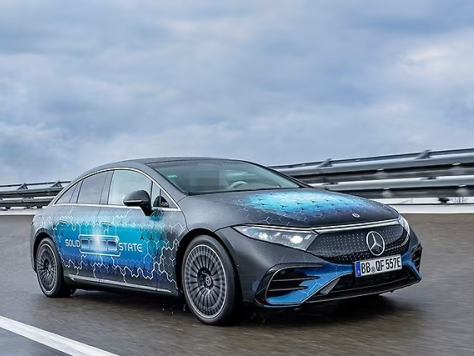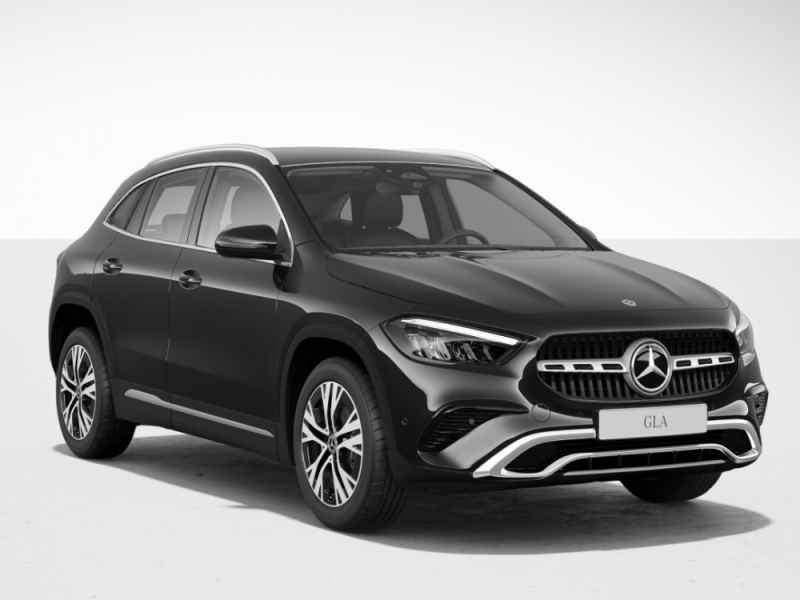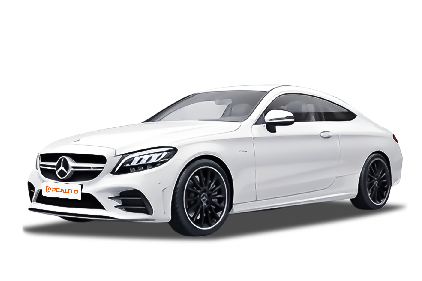Q
What's the service life of Mercedes C-Class' battery?
The battery lifespan of Mercedes-Benz C-Class can vary significantly. For conventional gasoline models, the designed battery service life is approximately 27 months, with a typical practical lifespan of about two years. Under conservative private usage patterns, a new battery may last 3-4 years initially, but subsequent replacements generally require renewal every two years. Taxi vehicles experience much shorter battery life - approximately one year for single-shift operation and just 8-10 months for double-shift usage.
For hybrid versions like the C260 equipped with a 48V mild hybrid system and lithium-ion battery, normal maintenance and usage typically yield about 6 years or 200,000 kilometers of battery service. However, this duration may be influenced by multiple factors including driving habits, road conditions, and climate.
Maintaining optimal battery longevity requires conscientious driving and maintenance practices. Regular vehicle inspections also help ensure the battery remains in peak condition.
Special Disclaimer: This content is published by users and does not represent the views or position of PCauto.
Related Q&A
Q
Which model of Mercedes C-Class is the best?
Currently in Malaysia, the Mercedes - AMG C 63 S E Performance (chassis code W206) is the most powerful C - class model. It is equipped with a 2.0L four - cylinder turbo engine and a high - performance PHEV system, with a combined output of up to 680PS and a torque of 1,020Nm, it can accelerate from 0 to 100km/h in just 3.4 seconds. This C63 S inherits AMG's racing genes and is newly added with a rear - axle electric drive, a 4MATIC+ all - wheel - drive system, and an AMG dynamic handling configuration, which significantly improves the handling. At the same time, it has an all - electric range of about 13 kilometers (WLTP standard), meeting the needs of short - distance emission reduction. Compared with the previous V8 C63 S (510PS) of the W205 generation, although the new model has sparked controversy by switching to a four - cylinder engine, it comprehensively surpasses the previous one in terms of power data and acceleration performance and is more in line with the electrification trend. In terms of price, the C63 S E Performance is expected to be priced over RM900,000 in Malaysia (subject to configuration and taxes), belonging to the top - tier performance sedan category. If your budget is a bit lower but you still pursue high performance, you can consider the C43 AMG (408PS).
Q
How to activate start-stop function of Mercedes-Benz C-Class?
The engine start-stop function of Mercedes-Benz C-Class is typically enabled by default. To verify its status or reactivate it, find the button marked with an "A" inside a circular symbol in the cabin - usually located above the left side of the gear lever - and press it to toggle the feature. For touchscreen operation, navigate to the vehicle settings, select either energy management or eco mode, and ensure the start-stop function is checked.
Some variants additionally allow control through the Mercedes me app (requiring phone connection to the car's hotspot before accessing the "Settings" menu), through the instrument cluster display (specific procedures vary by model - consult the owner's manual), or through the central console's driving computer (press the "Menu/Back" or globe-shaped button on the steering wheel to enter settings, then locate the "Engine" or "Engine Start/Stop" option).
The system automatically shuts off the engine when stationary at traffic lights or in congestion after a few seconds of brake application, restarting upon releasing the brake to accelerate or gently turning the steering wheel, thereby reducing fuel consumption and emissions.
Q
Does Mercedes C Class have a timing belt or chain?
The Mercedes C-Class uses a timing chain. The main timing drive methods for engines include timing belts, timing chains, timing gears, etc. Nowadays, most civilian gasoline vehicles use timing belts or chains. Among them, the timing chain is widely used because it requires no maintenance. The Mercedes C-Class models are equipped with timing chains. Compared with the timing belt, although it generates more noise, it has lower long-term usage costs as it doesn't need to be replaced regularly like a timing belt. Generally, you only need to check and adjust its tension every 100,000 kilometers or so. However, even though the timing chain is claimed to be maintenance-free, regular vehicle maintenance and inspections of relevant components are still necessary to ensure the normal operation of the engine.
Q
What audio system does Mercedes C Class have?
The Mercedes C-Class models are generally equipped with Harman Kardon or Burmester audio systems. Harman Kardon was founded in 1953 and is a division of Harman International Industries that specializes in producing home and car audio. Brands like BMW and Land Rover also frequently use its audio systems. It also owns several well - known brands such as JBL and AKG. The Burmester audio system was founded in Germany in 1978. As a high - end brand, it is renowned for its excellent sound quality and a pursuit of audiophile - level sound, and is a favorite among audio enthusiasts. Both of these brands can provide high - quality auditory enjoyment for passengers inside the car. For example, the 2018 Mercedes - Benz AMG C - Class Coupe is equipped with 21 speakers of Burmester and the Sound Plus function.
Q
Is Mercedes C Class equipped with ADAS?
The Mercedes C Class is equipped with ADAS (Advanced Driver Assistance System). It has reached the Level 2 driver assistance level and adopts five exterior cameras, 12 ultrasonic radars, and one millimeter - wave radar. When driving on the highway, the car - following and full - speed adaptive cruise control functions are stable, which can automatically adjust the vehicle speed according to the speed of the vehicle in front, maintain a safe following distance, and relieve the driver's fatigue during long - distance driving. In addition, the Mercedes C Class also comes with systems such as active braking/active safety systems, forward collision warning, electronic stability control, and automatic parking. For example, the active braking system can automatically apply the brakes when necessary to reduce the risk of collision; the automatic parking system can help the driver easily complete the parking maneuver. However, when facing complex road conditions such as on - ramps and road construction, the system's response ability is limited. The driver still needs to stay focused and be ready to take over the vehicle manually at any time.
Q
What suspension does the Mercedes C-Class have?
The Mercedes C-Class is equipped with multi-link independent suspensions both at the front and rear. The front and rear multi-link independent suspensions have numerous advantages in many aspects. They can effectively filter out road vibrations and bumps, providing a smoother driving and riding experience whether you're cruising on rough city streets or uneven rural roads. Additionally, this suspension setup enhances the vehicle's handling characteristics, allowing for better control during turns and maneuvers. The use of this suspension in the C-Class means that passengers can enjoy a more comfortable journey, while drivers can experience superior driving dynamics. For car enthusiasts, this suspension system is also a hallmark of the vehicle's precision engineering, which helps to improve the overall performance and reputation of the Mercedes C-Class.
Q
Does Mercedes C-Class have spare wheel?
The Mercedes C-Class doesn't provide spare tire. Instead, it's typically equipped with run - flat tires. These tires are designed to keep going even when they lose air pressure. With run - flat tires, the vehicle can still keep moving for a certain distance after the loss of tire pressure, without the need to install a spare tire right away, which provides a certain level of convenience and peace of mind for drivers, as they don't have to worry about changing a tire by the roadside immediately. To some extent, this also helps to reduce the vehicle's weight, which may potentially improve fuel efficiency. These run - flat tires usually have special markings like RSC to indicate their technical features.
Q
How to open the sunroof of Mercedes C-Class?
To open the sunroof of Mercedes C-Class, find the SOS button inside the car and push it backward. You can decide the opening degree on your own. For some models without an SOS button, there will be a dedicated button for opening the sunroof in the car, which usually has a pattern similar to a sunroof , press it and then the sunroof will be automatically opened. Besides this opening method, in some models, there is a switch in the center of the roof to control the opening and closing of the sunroof. You can operate it by toggling this switch. After the vehicle is turned off, you can also point the key at the driver - side door and long - press the lock button to close all windows, including the sunroof. Alternatively, you can get close to the driver - side door and long - press the sensor on the outside of the door handle to close them. Knowing these ways to open and close the sunroof allows passengers and drivers to enjoy the comfort brought by the sunroof more freely, such as rapid temperature reduction, fog removal, and improved air circulation.
Q
Is Mercedes C-Class equipped with LED lights?
Yes, the Mercedes C-Class is equipped with LED lights. Both the 2018 Mercedes-Benz AMG C-Class Coupe AMG C 43 4MATIC and the 2018 Mercedes-Benz AMG C-Class Coupe C 63 S come standard with LED headlights. Compared with traditional halogen lights, LED lights offer many advantages, such as better lighting effects, a more stylish appearance, and a longer service life. They can improve visibility on the road, especially when driving at night, in foggy or rainy conditions, ensuring safer driving. In addition, as a luxury car, the use of LED lights also improves the overall luxury of the Mercedes C-Class. In addition, equipped with other standard features like its comprehensive safety system and luxurious interior, the C-Class has become a popular choice among car enthusiasts in the sports car segment.
Q
Does Mercedes C-class have touch screen?
Yes, the latest Mercedes-Benz C-Class (W206 generation) comes standard with an 11.9-inch central touchscreen across the entire lineup. It's equipped with the second-generation MBUX (Mercedes-Benz User Experience) infotainment system, whose high-definition screen supports touch operation and tactile feedback function, allowing you to control functions like navigation, audio, and vehicle settings. The screen also features voice control with "Hey Mercedes" and supports wireless Apple CarPlay and Android Auto connectivity, making it more intelligent and convenient to use.
Moreover, the screen of the Mercedes-Benz C-Class offers clear display and an intuitive UI design. It has a sensitive touch response, which better meets the technological needs of modern users compared to traditional knob controls. In Malaysia, whether it's the entry-level C 200 or the higher-performance C 300 or AMG versions, this touchscreen is standard equipment, providing both drivers and passengers with a more modern interactive experience.
Latest Q&A
Q
What is the fuel consumption of GLC 2024?
The 2024 Mercedes-Benz GLC performs excellently in fuel economy. The specific fuel consumption data varies depending on the model and drivetrain. The fuel consumption of the GLC 200 is approximately 6.0-6.5 liters per 100 kilometers, while that of the GLC 300 is around 6.5-7.0 liters per 100 kilometers. The actual fuel consumption may vary due to factors such as driving habits, road conditions, and vehicle load.
The 2024 GLC is equipped with an efficient 2.0-liter turbocharged engine and a 48V mild - hybrid system, which further optimizes fuel efficiency and provides smooth power output. For Malaysian consumers, the fuel consumption performance of the GLC is very suitable for both city commuting and long-distance driving. Especially when fuel prices fluctuate greatly, its energy-saving performance is particularly important.
In addition, regular maintenance and proper use of driving modes (such as the Eco mode) can also help reduce fuel consumption. It is recommended that owners refer to the official manual to achieve the best fuel economy. If you have higher requirements for fuel consumption, you can also consider the plug-in hybrid version of the GLC, which can further reduce fuel consumption in pure-electric mode.
Q
How many miles can a GLC 2024 go on a full tank?
According to the official data of the 2024 Mercedes-Benz GLC, its fuel tank capacity is approximately 60 liters. The specific cruising range depends on driving habits and road conditions. Under combined driving conditions, it can travel about 600 to 700 kilometers, which is equivalent to about 373 to 435 miles. This vehicle is equipped with an efficient turbocharged engine and advanced energy - saving technologies, such as a 48V mild-hybrid system, which helps to optimize fuel economy and is particularly suitable for the mixed urban and highway driving conditions in Malaysia.
If you want to further extend the cruising range, you can pay attention to smooth acceleration, reduce sudden braking, and regularly maintain the vehicle, such as keeping the tire pressure normal and replacing the air filter in time. In addition, the 2024 Mercedes-Benz GLC also offers a variety of driving modes, such as the Eco mode, which can help reduce fuel consumption and is suitable for long-distance driving or congested roads. For users in Malaysia, the cruising performance of this car can fully meet the needs of daily commuting and weekend outings, while also combining luxury and practicality.
Q
Is GLC 2024 a safe car?
The 2024 Mercedes-Benz GLC performs excellently in terms of safety. It is equipped with a number of advanced safety technologies, including active brake assist, lane-keeping assist, blind-spot monitoring, and adaptive cruise control. These features can effectively reduce the risk of accidents and enhance driving safety. In addition, the 2024 GLC also adopts a high-strength body structure and multiple airbags, further enhancing its collision protection capabilities.
For consumers in Malaysia, this car is also adapted to local road conditions, such as the hot and rainy climate. Its chassis tuning and electronic stability system have also been optimized to ensure a stable driving experience on various road conditions.
If you are particularly concerned about the safety performance of cars, you can also learn about the safety configurations of similar models from other brands, such as the Volvo XC60 or the BMW X3. They also perform well in terms of safety.
Overall, the 2024 GLC is a reliable and safe vehicle, suitable for Malaysian family users who value safety and comfort.
Q
What is the maintenance cost of Mercedes GLC 2024?
The maintenance cost of the 2024 Mercedes-Benz GLC in Malaysia depends on the model (such as GLC 200, GLC 300, or AMG versions) and the selected maintenance package. It's generally recommended to perform basic maintenance every 10,000 kilometers or 12 months. The cost of basic maintenance is approximately between RM1,500 and RM2,500, which includes oil and filter changes and basic inspections. For major maintenance (such as at 40,000 or 60,000 kilometers), the cost may reach RM4,000 to RM6,000, involving the replacement of transmission fluid, brake fluid, etc.
In addition, the "Service Package" provided by Mercedes-Benz can be pre-purchased, which can save about 10% - 15% of long-term maintenance expenses. In Malaysia, the maintenance cost of luxury cars is generally high, but Mercedes-Benz has an extensive after-sales service network covering major cities like Kuala Lumpur and Penang, ensuring that car owners can get professional support.
It's worth noting that the replacement costs of vulnerable parts such as tires and brake pads are not included in the above costs. It is recommended that car owners conduct regular inspections to extend the service life of the parts. If you choose a third-party repair shop, the cost may be lower, but make sure they use original-certified parts to avoid warranty disputes. The maintenance cost of the Mercedes-Benz GLC is in line with its high-end positioning, but good maintenance habits can effectively reduce the long-term cost of car use.
Q
How to connect phone to Haval H2 2019?
To connect your phone to the 2019 Haval H2, first make sure the vehicle's infotainment system is turned on. Then, you can connect via a USB cable or Bluetooth. If you use a USB cable, plug your phone into the USB port on the center console. The system will automatically recognize it and prompt you to complete the connection. Some models may require you to enable the USB debugging mode on your phone.
If you're using Bluetooth, go to the "Settings" menu in the in - car system, select "Bluetooth" and turn on the search function. At the same time, turn on Bluetooth on your phone and select "Haval H2" to pair. Once the pairing is successful, you can use the call and music playback functions. It should be noted that there may be slight compatibility differences among different phone models. It is recommended to use the original data cable for optimal stability.
In addition, the in - car system of the Haval H2 also supports the mirror projection function of some phones, such as Android Auto or CarPlay. You can achieve navigation and more app operations by downloading the corresponding apps, which provides convenience for driving.
In the hot climate of Malaysia, it is recommended to regularly check the heat dissipation of in - car electronic devices to avoid performance degradation caused by long - term high - temperature operation. Also, keep the system software updated to get the latest function optimizations.
View MoreRelated News

Mercedes-Benz CLA Electric Opens for Pre-Orders with Over 700km Range
AshleyAug 14, 2025

Mercedes-Benz Unveils Bold Plan: 18 New Models by 2026
Kevin WongAug 6, 2025

Mercedes-Benz releases teaser image of electric GLC, featuring a retro illuminated grille
RobertAug 5, 2025

Benz to Bring Solid-State Battery EVs by 2030
WilliamJul 25, 2025

Mercedes-Benz GLA: Exquisite Interior Design for a Premium Driving Experience
Kevin WongMay 14, 2025
View More


















Pros
Cons